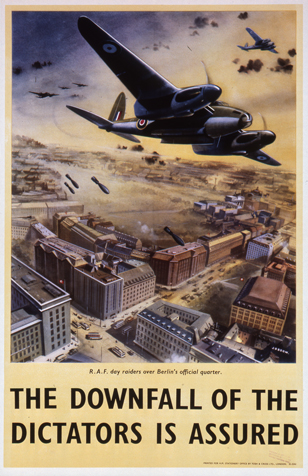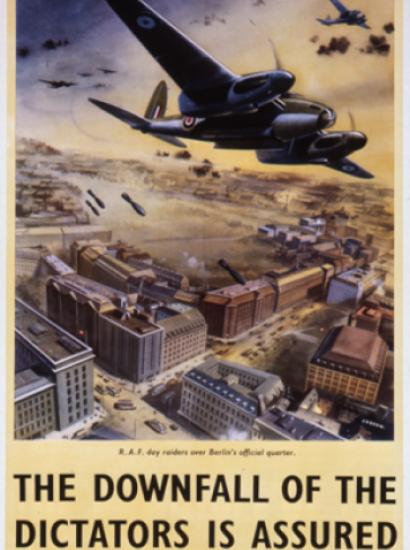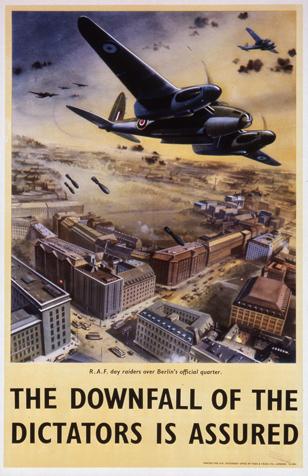
Since the introduction of weaponized drones as a tool of counterterrorism by the Bush administration not long after 9/11, and especially since their use was ramped up dramatically by the Obama administration, their strategic meaning and value has been sharply debated. The answers vary wildly and often run to extremes, starting with the question of whether they constitute something “new” in armed conflict.
Particularly for the US military, “remotely piloted air vehicles” (a much more accurate term than “drones”) are just another air platform. The drone’s pilot happens to sit on the ground rather than in the aircraft, but a human still controls it in real-time. If a drone craft carries a weapon, an authorized person must make a decision in real-time to fire it—a decision that, for all the controversy over “kill list committees,” is just the “targeting process” in war and, on account of lengthy loiter time, allows for a far more considered decision to fire than most other weapon systems. Its use is fully subject to the laws of war governing targeting, the same as any other weapon platform. Although many different kinds of drones are going to come on-line in the next decade or so, the ones used today were originally designed as surveillance craft; they are slow and have no air defense capabilities, but by the same token have extraordinary loiter capabilities and compelling utilities against non-state armed groups or terrorists.
An armed drone might be a useful substitute in some circumstances for existing manned air platforms in combat, but is just another choice in the weapon system menu. While no human pilot is exposed to risk while flying an armed drone and might be a continent away from the strike point, the reality is that standoff weapons, from 19th-century artillery to cruise missiles fired by a sailor buried at the bottom of a ship hundreds of miles at sea, have been regarded routine in modern warfare for well over a century. Remotely piloted aircraft are nothing new in that regard and, for that matter, even the manned attack aircraft they might replace in a given mission often strike from over the horizon—25 or more miles away.
For critics of weaponized drones, the substitution of armed drones for other platforms in “conventional” warfare on “conventional battlefields” is beside the point. The controversy arises around the ability to use weaponized drones in an entirely different form of hostilities from conventional fighting—targeted killing against targets located outside of war zones as traditionally conceived. In that case, drone technology enables a genuinely new means of counterterrorism: targeted killing, in which the costs of the strike are relatively low (not even special operator boots on the ground and the ability impressively to minimize civilian harm, through precision weaponry and the ability of today’s drones to loiter unseen for weeks or months, in order to gain intelligence on the target and to pick the window in which the least collateral civilian harm will be inflicted. These features are genuinely new—at least they are new as a means of engaging in counterterrorism.
Technological capability to strike in a way to minimize risk to one’s own forces, one might have thought, is a feature, not a bug—but not, surprisingly, in an international political environment in which a common criticism is that American servicemen and women don’t take enough personal risks. “Real men fight mano-a-mano,” as one tweet said, apparently disregarding the history of warfare since one fighter threw a rock at another from a safe distance a hundred thousand years ago. Targeted drone strikes are the most sparing form of weaponry in history with regard to protection of civilians—assuming, however, that the relevant comparison is to other forms of violence. Critics who deny this tend tacitly to assume that if drones were not used, the alternative is not to use force at all, and so any civilian casualty is unjustifiable. The artillery barrages and massive airstrikes conducted by the Pakistani military over the years, right up to 2014, says this is not the relevant comparison.
So whether one sees drones technologies in targeted killing, counterterrorism operations as a feature or a bug depends very much on whether one wants the US to be successful, in part through highly precise weapons, in forcible counterterrorism-on-offense. But in this regard, at least, drones enabling targeted killing is a genuinely new capability in global counterterrorism. It has limits that are often not recognized by either supporters or critics, however. The drone attack is the last kinetic step in a long chain of intelligence gathering and analysis; some of that can be gathered by drones themselves or signals intelligence, but the US ability to successfully use drone strikes from 2009 onwards was in large part a consequence of the CIA having established networks of on-the-ground human intelligence that enabled it to decide who to target independent of Pakistani intelligence. Drone warfare is best understood as intelligence-driven, precision strikes that happen to benefit from drone technologies. Moreover, the fact that the drone pilot is located in Nevada does not mean a genuinely global capability; the aircraft requires an airstrip, refueling and repair to keep it operational, and support today of some 200 personnel—all of which has to be located in theatre, not in Nevada.
Finally, the lesson of the past five years is that drones are a mechanism for conducting raids against an enemy that has long been in the position of being the raider, not the raided. They enable the US to keep the enemy off-guard and significantly reduced in the ability to plan and consolidate gains over the long-term. It was popular for a while to dismiss drone attacks as a mere “whack-a-mole” tactic masquerading as strategy—kill one leader and the next pops up to take his place—but in fact the supply of experienced senior leadership is far from inexhaustible, especially if one’s operational life is measured in months.
At the same time, however, drone warfare and targeted killing, while a core on-offense pillar of global counterterrorism, cannot by itself solve the problem of denying territory to terrorist groups. The most difficult problem facing the United States for the foreseeable future in counterterrorism abroad is that, across the Horn of Africa and the Rift Valley, jihadist groups are moving to try and seize whole political territories and their populations, through insurgency and civil war. These insurgent groups either have, or are hospitable to, transnational terrorist groups, who are able to use a whole national territory as a safe haven. This was the pattern in Afghanistan pre-9/11—the Taliban governing internally and al-Qaeda as its transnational partner—and this problem cannot be addressed through drone strikes alone. The unified strategy of counterterrorism-on-offense must find a way to repulse and defeat those jihadist groups, on the ground. In practical terms, this describes the US military and intelligence effort in those countries in Africa today—military and intelligence assistance, logistics, supply, and in some case, an air force, and an air force utilizing drone strikes against whole formations of enemy fighters.
That is not far from what the US has been doing in Yemen since the start of the Obama first term. As a strategy it is not wrong and the US defense community is right to look to replicate it in other contested or ungoverned states in Africa. In that case, however, drones represent genuinely something new in the conduct of counterterrorism globally, an offensive, raiding capability along with a persisting intelligence gathering capability. They are a necessary capability, a game-changing capability, but not a sufficient one. Drones have to be integrated with strategies for denying territory and haven, particularly whole political territories, to jihadist insurgents and their transnational terrorist wings.















